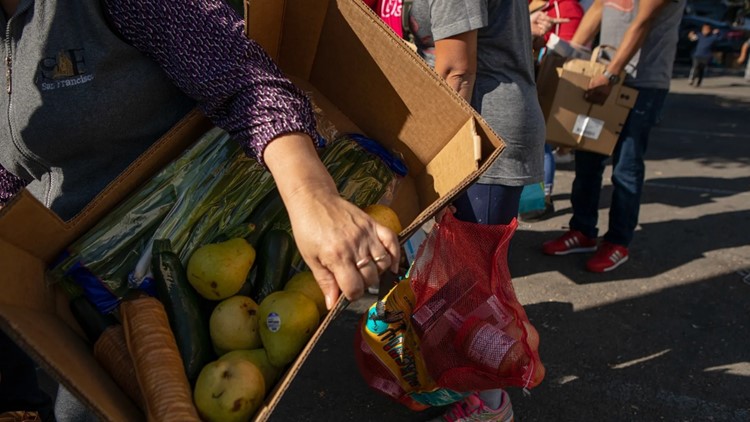CALIFORNIA, USA — California is full of food yet scarred with hunger.
Despite the state producing nearly half the country’s fruits and vegetables, one in five Californians is food insecure, meaning they have limited or uncertain access to adequate food. Food insecurity does not necessarily cause hunger but is a possible outcome.
People experience food insecurity in different ways. Some families may only eat lesser quality food, while others may eat less.
Food insecurity can have long-term physical and mental health effects. Research shows that food-insecure children can experience developmental delays and have trouble learning language. According to the American Academy of Pediatrics, Children are also more likely to fall sick, recover more slowly, and be hospitalized more often if their access to food is inconsistent. Food-insecure adults face higher rates of obesity, chronic illness, anxiety, and depression.
The COVID-19 pandemic brought sharper awareness to hunger in California, as many Americans experienced food insecurity for the first time. In the last year record inflation drove food prices up 4.5%. Then in April, an influx of federal food aid from the pandemic dried up. The state has tried to take advantage of federal programs that provide food aid and expand the pool of who is eligible for help. Still, some warn that the number of food-insecure Californians will rise far beyond 20% in 2023.
Here’s a look at how big the problem is, why it’s challenging to get help to those who need it and some potential solutions to hunger in California.
When the COVID-19 pandemic struck in 2020, recipients of CalFresh, California’s version of food stamps, were given the maximum benefits available for their household size. Advocates theorize that may have contributed to a steady growth in enrollment; total payments to California families rose from $505 million in March 2020 to $1.4 billion in March 2023.
Those emergency allotments ended in March, reducing benefits to 5.3 million Californians by a total of nearly $500 million a month. For some single-person households, CalFresh benefits dropped from $281 to as little as $23 a month.
- In May 2019, before the pandemic, the average Californian receiving food stamps got $132 a month;
- In May 2021, when benefits were boosted during the pandemic, the average Californian receiving food stamps got $214 a month;
- In May 2023, after the boost in aid ended, the average Californian receiving food stamps got $179 a month.
The extra benefits maintained the number of food insecure Californians at 20% during the pandemic. However, that number is expected to rapidly rise this year.
Since March, Californians have turned to their local food banks in record numbers. Instead of functioning as sources of emergency aid, food banks say they are becoming long-term supermarkets for Californians facing food insecurity.
March and April were among the busiest months ever for the Sacramento Food Bank & Family Services. Before the pandemic, the food bank served around 150,000 people per month. Since March, it has averaged more than 270,000 people each month.
The statewide food banks association is warning of a “catastrophic hunger crisis” this year.
The state government’s primary way to help low-income families afford food is CalFresh. Qualifying recipients get money each month on an Electronic Benefits Transfer card, which is similar to a debit card, and can spend it on food items at grocery stores and some farmer's markets.
How much each family gets depends on their household size and their income. The U.S. Department of Agriculture sets benefit amounts each year and are based on nationwide cost-of-living measures. That can result in benefits that don’t always account for how food prices rise locally.
The federal government has boosted benefits during emergencies like the Great Recession and the COVID-19 pandemic. In October 2021, it also overhauled its formula for calculating benefits, resulting in a significant hike during record inflation.
Click here for the full story.
WATCH RELATED: New statewide initiative aimed at ending hunger crisis in California



